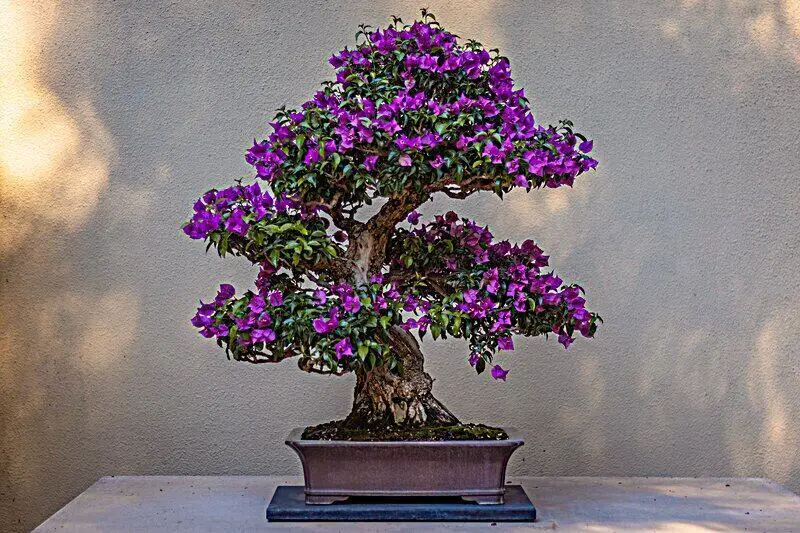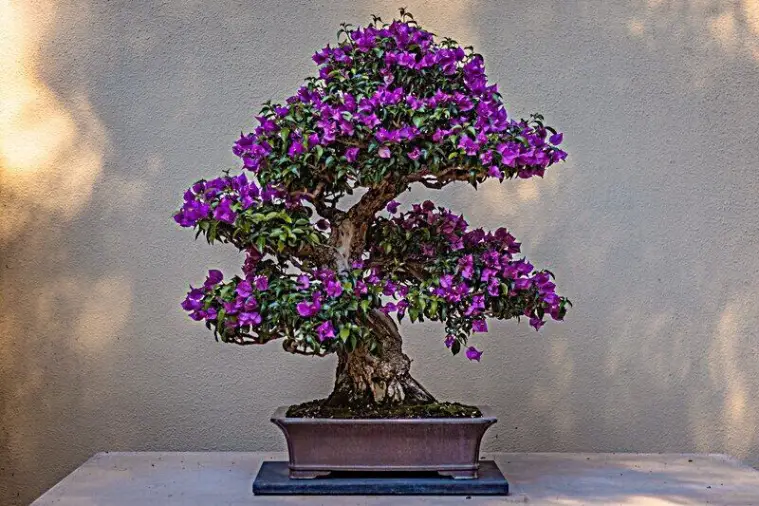The art of Bonsai is a traditional Japanese practice of cultivating miniature trees in small pots or trays. This art form has been around for over a thousand years and is now popular worldwide. In this blog post, we will explore the history, demand, beauty, and usage of Bonsai.
Table of Contents
- History of Bonsai:
- Demand for Bonsai:
- The Beauty of Bonsai:
- Usage of Bonsai:
- The Art of Bonsai: Positivities & Negativities of Bonsai Art
- Conclusion:
History of Bonsai:
Bonsai, which means “planted in a container,” originated in China during the Han Dynasty (206 BC to 220 AD) as a way to bring nature into the home. The Chinese created miniature landscapes, known as Penjing, which often included rocks, water, and miniature trees.

The practice of Bonsai then spread to Japan during the Heian period (794-1185). The Japanese further developed the art form, refining techniques to create more natural-looking trees with smaller leaves and more refined branches. The Japanese also incorporated religious and philosophical elements into Bonsai, considering it a way to connect with the natural world and achieve enlightenment.
Demand for Bonsai:
Bonsai has become a popular hobby worldwide, with enthusiasts spending hours carefully pruning and shaping their trees to create the desired effect. Bonsai clubs and associations exist in countries across the globe, and there are numerous competitions and exhibitions held every year.

Bonsai trees are also popular gifts, particularly for housewarmings or special occasions. They make unique and meaningful gifts that can last for decades, and they bring a touch of nature into any home or office space.
The Beauty of Bonsai:
The beauty of Bonsai lies in its ability to capture the essence of nature in miniature form. A well-crafted Bonsai tree can evoke feelings of calm and serenity, and it can be a source of pride for its owner.
Bonsai trees come in a variety of styles, from the upright formal style to the slanting informal style. Each style is designed to mimic the growth pattern of a particular tree species, and each requires different techniques to maintain its shape and size.
The art of Bonsai is also about storytelling, as each tree is meant to represent a specific moment in nature. The miniature trees can represent a particular season, a specific location, or even a cultural or historical event.
Usage of Bonsai:
Bonsai trees are not just beautiful objects to look at; they also have practical uses. For example, they can be used as a form of meditation or mindfulness practice, as caring for the trees requires focus and concentration.
In addition, Bonsai trees can be used as a therapeutic tool. Studies have shown that caring for plants can reduce stress and anxiety levels, and Bonsai can be particularly effective due to the intricate care required to maintain them.

Bonsai trees can also be used to purify the air in indoor spaces. Plants naturally filter out pollutants and toxins from the air, and Bonsai trees are no exception. In addition, they add humidity to the air, which can help alleviate dry skin and respiratory issues.
The Art of Bonsai: Positivities & Negativities of Bonsai Art
Bonsai, like any art form, has both positive and negative aspects. Here are some of the positives and negatives of Bonsai:
Positives:
- Beauty: Bonsai trees are beautiful and can bring a sense of nature into any space.
- Practical uses: Bonsai trees can be used for therapeutic purposes, such as reducing stress and purifying the air.
- Cultural significance: Bonsai has a rich cultural history, and the practice can serve as a way to connect with nature and gain a sense of enlightenment.
- Personal growth: Caring for a Bonsai tree requires patience, dedication, and attention to detail, which can be a form of personal growth.
- Social community: Bonsai enthusiasts can join clubs and associations, attend exhibitions and competitions, and connect with others who share their passion.
Negatives:
- Expense: Bonsai trees can be expensive, and the cost of tools, pots, and soil can add up quickly.
- Time-consuming: Caring for a Bonsai tree requires time and attention, and the tree must be pruned and shaped regularly to maintain its form.
- Potential harm: Improper care or technique can harm the tree and potentially kill it, which can be discouraging for those who are new to the practice.
- Limited space: Bonsai trees require a small amount of space, which may limit their growth potential and the types of trees that can be used.
- Cultural appropriation: In some cases, the practice of Bonsai can be seen as cultural appropriation, particularly if it is not done with an understanding of its cultural significance and history.
Overall, Bonsai is a unique and meaningful art form with both positive and negative aspects. It requires patience, dedication, and attention to detail, but can be a source of personal growth and a way to connect with nature and the community of enthusiasts.
Q: What is the significance of bonsai in gardening and horticulture?
A: Bonsai holds a profound significance as a living art form, blending horticulture with artistic expression. It allows enthusiasts to create miniature trees, fostering patience, balance, and a deep connection with nature.
Q: How does one choose the right tree species for their bonsai collection?
A: Selecting the right tree species is crucial. Consider factors like local climate, growth patterns, and personal preference. Popular choices include juniper for resilience, maple for vibrant colors, and pine for elegance.
Q: What are the essential techniques for styling and shaping a bonsai tree?
A: Bonsai styling involves principles like balance, movement, and empty space. Techniques such as pruning,
Q: Can bonsai trees thrive in different climates?
A: Bonsai trees can indeed thrive in various climates with proper care. Understanding your local climate is key—choose tree species that align with your region and adapt watering and care routines accordingly.
Q: What are the common challenges faced in bonsai cultivation, and how can they be overcome?
A: Common challenges include pests, root issues, and environmental impact. Regular inspection, organic pest control, proper pruning, and understanding the impact of climate help overcome these challenges.
Q: Are there advanced techniques for seasoned bonsai enthusiasts?
A: Yes, advanced techniques like wiring, layering, and grafting allow enthusiasts to take their bonsai to the next level. These methods provide precise control over shaping and create intricate designs.
Q: How does bonsai contribute to environmental awareness?
A: Bonsai encourages a deep appreciation for nature, emphasizing the delicate balance between humans and the environment. Cultivating bonsai promotes environmental mindfulness and a sense of responsibility for the natural world.
Q: What therapeutic benefits does bonsai cultivation offer?
A: Bonsai cultivation is therapeutic, reducing stress, enhancing creativity, and improving focus. The process provides a sense of companionship, fostering emotional well-being through the nurturing connection between caretaker and tree.
Conclusion:
In conclusion, the art of Bonsai is a timeless practice that continues to captivate people worldwide. Its the rich history and cultural significance, combined with its beauty and practical uses, make it a unique and meaningful art form.
Bonsai trees represent a connection to nature and can bring a sense of calm and serenity to any space. The careful and deliberate care required to maintain these miniature trees can also serve as a form of meditation and mindfulness practice, providing mental and emotional benefits to their caretakers.
Whether you’re a seasoned Bonsai enthusiast or just discovering the art form, there’s no denying the beauty and significance of these miniature trees. So take a moment to appreciate the art of Bonsai and all that it has to offer.
